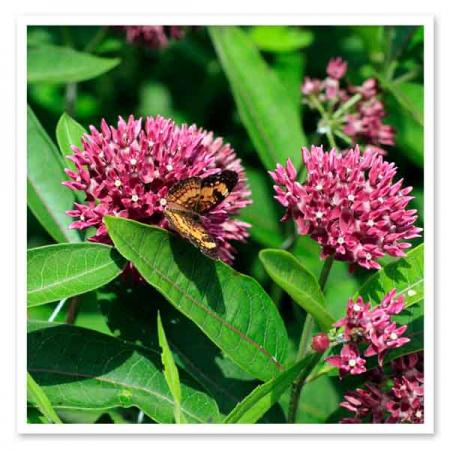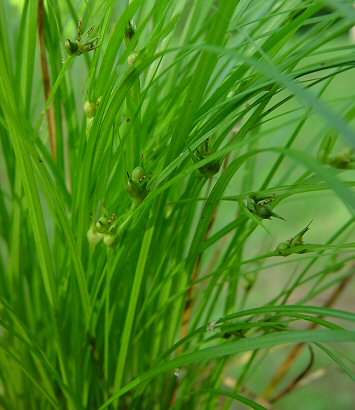The Restoration Target List of 545 taxa, of which the Seed Bank has focused for the majority of its seed collections, currently has a good number of species stored in the Bank. However, when we recently took a look at the species that have not yet been collected in the Chicago area, we were surprised to find that number of them were common.
Upon closer inspection, it became apparent why many of them had not been collected. We found that several species are either never found in large numbers in a population or naturally produce few seeds to the extent that they do not meet the requirements set by our collecting protocols – a minimum of fifty individuals and at least 3000 seeds. Plants such as purple milkweed (Asclepias purpurascens) and loose-headed bracted sedge (Carex sparganoides) are rarely found in concentrated numbers in a population and, therefore, since many remnant habitats in the Midwest are small in area, numbers of these species are also small.

Alternatively, plants such as blunt-scaled wood sedge (Carex albursina) and white trout lily (Erythronium albidum) only produce a few seeds per plant so meeting the minimum number of seeds as stated in our collecting protocols is difficult. When only 20% of the seeds are removed for collection or 20% of the plants in the population are sampled, the population must be very large and considerable time committed in order to harvest the 3000 seed minimum.
The fact that these species do not readily adapt to our collecting protocols does not make them any less important to our collection. In order to ensure seeds of these species are collected, our protocols must be modified while retaining as much genetic diversity within populations as practically possible.
Currently, we have made the decision to collect fewer individuals of species that naturally occur in low numbers with the understanding that the genetic diversity is probably lower than for species with more robust populations but a small collection is better than no collection. If the species is rare, a decision to collect along maternal lines (seeds from each plant collected separately) will help ensure that the genetic variation within the population can be maximized by selecting seeds equally from each parent plant.
For plants that naturally produce fewer seeds despite their potentially large numbers collecting equal numbers of seeds from each plant (equal representation) will enhance genetic variation within the population when selecting seeds from a pooled source. Grass sedge (Carex jamesii) is a good example of a species that is abundant in woodlands but naturally produced few seeds. Predetermining a number of seeds to collect from each plant before the collection process begins will help equilibrate the genetic diversity in the pooled collection despite a lower number of seeds.

With these modified collecting protocols in place, it will now be easier to make collections of many of the species that are under-represented in the Seed bank.







